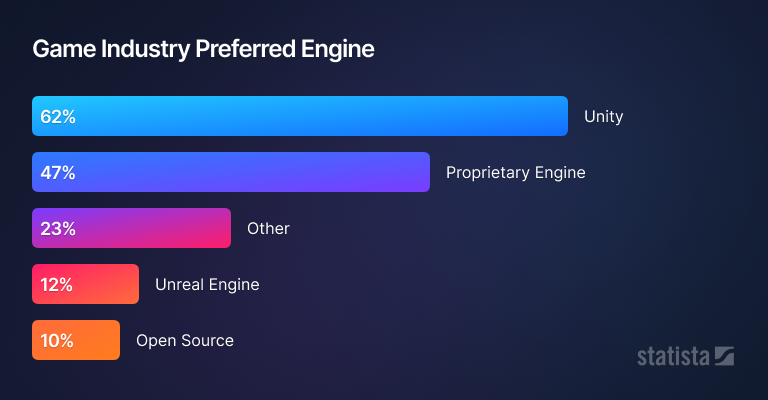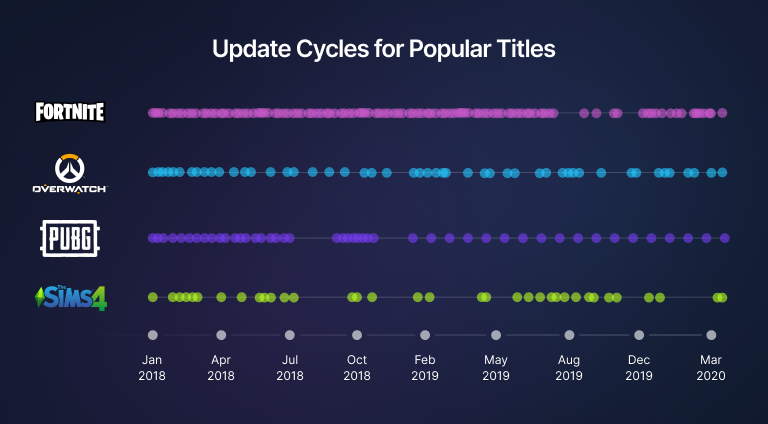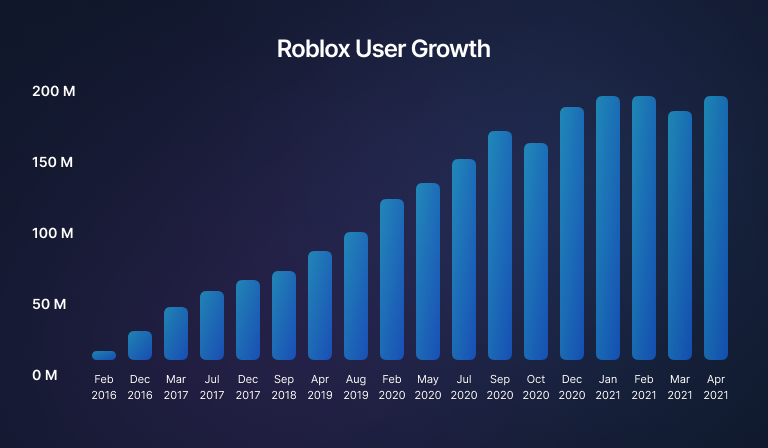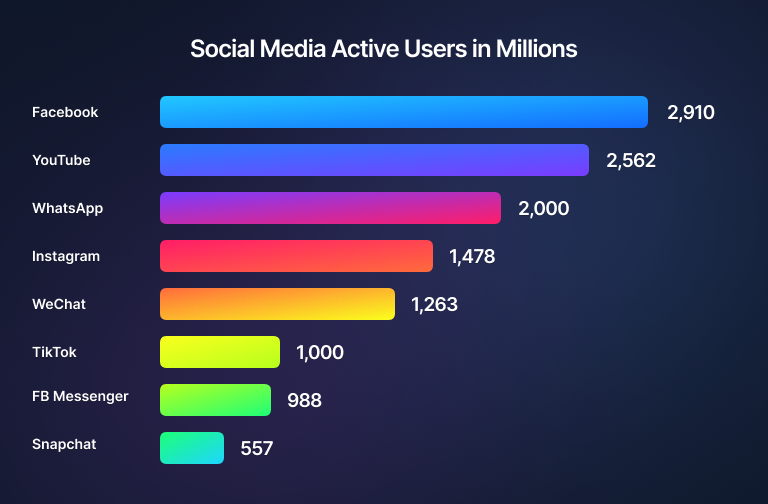Image Credit: Nvidia Omniverse
A sound development strategy is one of the better ways an indie creator can help shape their vision, garner interest from social media, and retain an engaged player base. It lets you discover user behaviours, project market fit, and build trust between you and who you're trying to reach.
As you can assume, it's well worth understanding. But that's easier said than done. Game development isn't static. The landscape of the practice is constantly changing. It doesn't look the same now as it did ten years ago, and in ten years it won't look the same as it does now.
It's a difficult topic to pin down — one with a fascinating past and an exciting future. Out of both genuine interest and forward-thinking practicality, it's important to understand both where it's been and where it's going.
Here, I will try to give some perspective on both. We're going to take a look at how game dev has evolved in the past decade, and how it's going to evolve in the next one according to market trends.
How Game Dev Evolved in the Past Decade
Unreal changed the game.
In 2014, Tim Sweeney and Epic sought to bring the world their next version of their game engine by driving the message "If you love something, set it free." To say this was a monumental leap in game development would be an understatement. And it did indeed set us all free.
But Unreal's engine revolution wasn't exclusively linked to monetary freedom. Epic's meteoric rise to prominence — one of the most disruptive releases in development history — also had a profound impact on the gap between designer and programmer silos that existed for decades.

It was tacit evidence that developer horror stories were being told online — well beyond the control of industry studios — and it was in their best interest to unify those workflows to free both designers and programmers alike.
The change represented what is still a continuous effort by Epic to provide users with visual, no-code development experiences. And it did just that. The shift that set the stage for businesses to focus on producing more high-quality, engaging projects.
Games as a service takes over.
It was not until this influx of free no-code tools that an influx of titles hit the market resulting in Games as a service's (GaaS). One of the biggest shifts in launching a project to the public — also had a profound impact on the practice. As this strategy developed into mainstays of release planning, this presented new challenges for developers and scheduling of content to appease their audience.
As GaaS evolved, it popularised a different kind of content consumption that evolves with not only the purchasing habits of the audience but also unique ideas on how to evolve the game from players themselves. The difference boiled down to a matter of "active versus passive engagement."
Consumers now latch onto titles and stay engaged much longer than the traditional product life cycle. Generally speaking, when you enter a game service you know the product will continue to evolve with you, you're looking for a product that will entertain and define your presence online. GaaS allowed users to consume content drops more continuously on their preferred platforms. The content you see after a year on a title is constantly being updated and released — not strictly on launch.

Source: G.P. Bullhound
That trend incentivized the creation of more shareable, attention-grabbing content that could easily be spread across social media channels. And sure did it work. Driving the profits of GaaS juggernauts like PUBG and Fortnite to swell into the billions each year.
Roblox made a push.
Roblox also emerged as one of the prevailing user-generated communities as the decade progressed, particularly among younger players.
As of 2021, roughly 200 MAU existed within the Roblox platform. Their stats overall speak to the shift in not only UGC but also the strength of having the collaborative community alongside it.
Here are several figures to note about usage statistics within the platform:
- Roblox has 43.2 million daily active users. That’s up from 14 million daily active users in 2016.
- There are 9.5 million developers on the Roblox platform.
- Community developers made over $328 million on Roblox.
- Roblox has over 40 million games.
- 67% of Roblox users are under 16.
Looking at Roblox user growth since 2016 we can see the explosive growth within the platform:

Source: Backlinko
The GaaS model is inherently engaging. Generally speaking, it's easier to retain players, email upsell content, and extend the profitability of the production. Gradually, players took to it more and more as the decade progressed. By the end of the 2010s, titles that had launchers and content drops were central to the landscape of game development.
Obviously, game development underwent several shifts in the 2010's, but as I said at the beginning of this article, the practice isn't — and will never be — static. There are still plenty of changes to come.
How Game Dev Will Evolve in the Next Decade
Mobile content will continue to rule
As shown in the previous infographic, mobile creation is emerging as one of the most — if not the most — important mediums for game development in the beginning part of this decade. There's no indication that that trend is stopping anytime soon.
And, as Epic's Founder Tim Sweeney touts, “I believe that augmented reality will be the biggest technological revolution that happens in our lifetimes."
All told, it looks like the exploration and expansion of mobile interactive experiences as the preeminent medium for mass-adoption is going to continue. The priority for developers is going to be a matter of working with brands and challenges within social platforms.
That could mean emphasizing the quality of the content produced — ensuring it's enriching, well-crafted, and relevant to users. Within this sector we must give a nod to the largest of the emerging interactive platforms, TikTok.

No matter how indie creators and studios manage to innovate when it comes to development, the medium is going to be a mainstay in the evolution of interactive experiences going forward.
Adjusting for mobile creation will be essential and present new experiences
According to Statista, global mobile data traffic in 2022 will be seven times larger than it was in 2017. Mobile device usage is increasing astronomically, and it's in every game developer's best interest to keep pace with that trend.
In 2021, 87% of teens in the US had an iPhone, and that trend is showing no signs of slowing down. Having a website optimized for mobile devices will be central to successful SEO efforts. And a lot of the content you create will need to fit that bill as well.
Editors should be easily navigable on all mobile devices, whether it be a tablet or phone. Readily accessible scenes that your community can remix on mobile devices will be a pivotal shift in amount of potential development users. Nevertheless, developers and customers will need to be able to get as much out of their mobile resources as the desktop experience.
This shift towards mobile will also present new opportunities across all industries to provide non-gaming experiences. More novel mobile technology — like virtual and augmented reality — will have a very real place in the future leading towards digital twins in society.
As people utilise more interactive AR platforms, game developers will have to as well.
3D scanning and cross-platform experiences will increase
The future of development will include an increased awareness and dedication to recycling content and sharing it across platforms. Slowly joining the fabric of reality to form the connected metaverse we are being sold today.
Richard Kerris VP of Nvidia Omniverse Platform says, "When you can make decisions in that synthetic world before you commit to it in the physical world, you have a lot of cost savings."
Additionally Nvidia CEO Jensen Huang noted, "Omniverse or the Metaverse is going to be a new economy that is larger than our current economy."
If you don't already, it is paramount to investing time in a mobile development strategy for 2022 and beyond. This will help any developer prepare for the influx of portable devices and the ultimate introduction of AR glasses, a critical part in the future digital to real world convergence we all will welcome as the internet did in the 90's.
Brands will use more interactive content in our surroundings
Nowadays, brands are only beginning to invest in the digital space, namely interactive content. With global metaverse revenue involving live events, ads, social and hardware projected to close to $1 trillion according to Bloomberg. The gaming market and high-end hardware alone may surpass $400 billion.
If you have missed the recent advancements in brand attachment to the digital world, here are several examples of how the world is transitioning to embrace the digital future:
- Education redefined. No longer within the educational setting you will find an employee or student disconnected from the physical world. An interactive portable experience to show spatially how to interact or understand the world around them.
- Digital goods and their counterparts. For years brands have shied away from engaging in most of the multiplayer experiences. The reinvention of the multiplayer MMO experience will usher in brand engagement for all things digitally experienced.
- Virtual events. Brands have already started to leverage digital events, harnessing the power of live acts and creating NFT's to trade for exclusive access to rewards or sell to others.
If there's anything to take away from understanding the previous and upcoming evolutions of game development it's this — a lifelong pursuit. New platforms and quality bars are always emerging, and it will always be in your best interest to stay ahead of the game.
And above all else, focus on consistently creating high-quality experiences that your audience will always be able to feel emotionally invested and desire to share with others.
